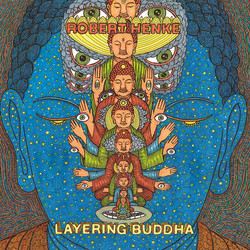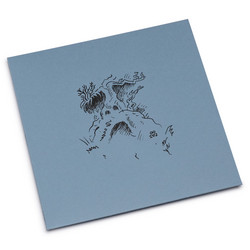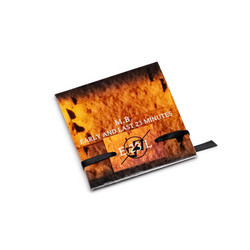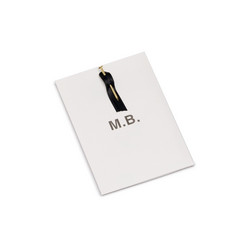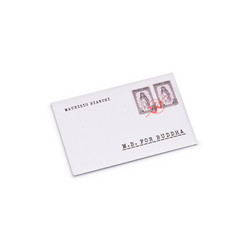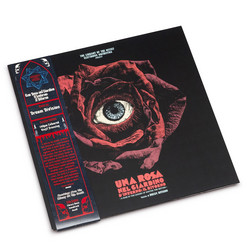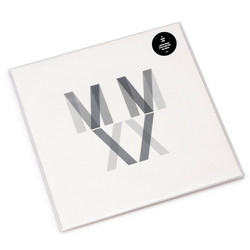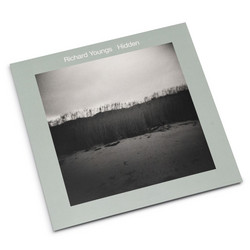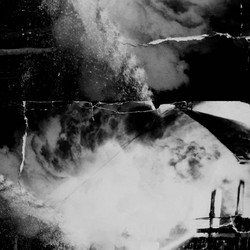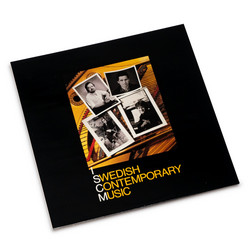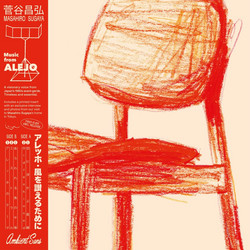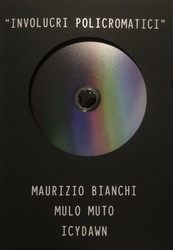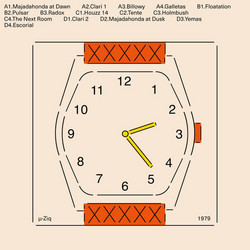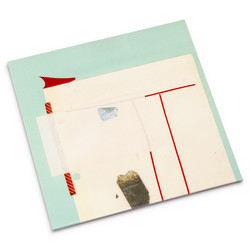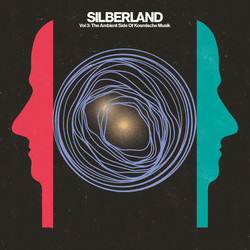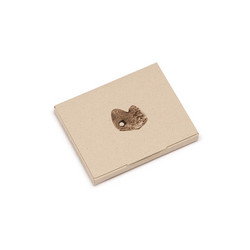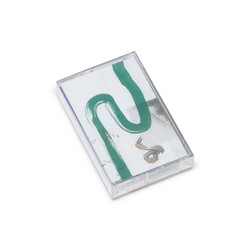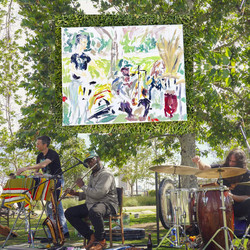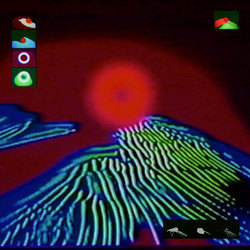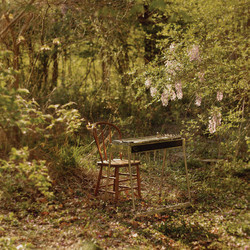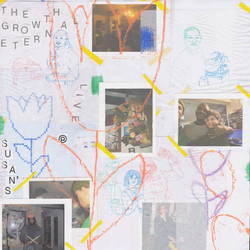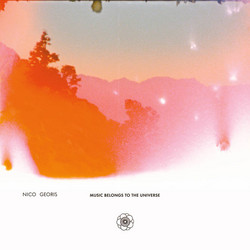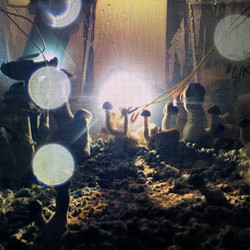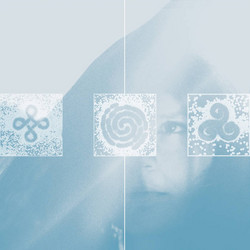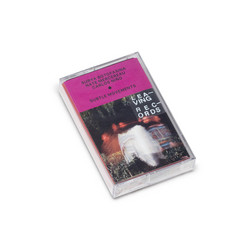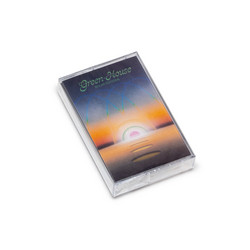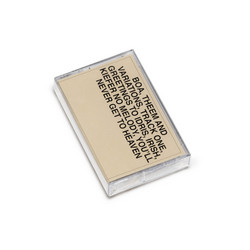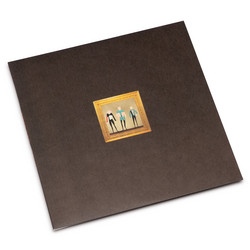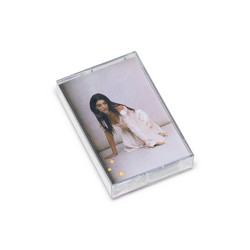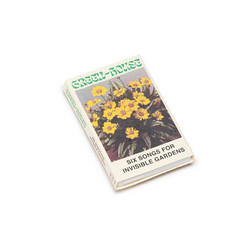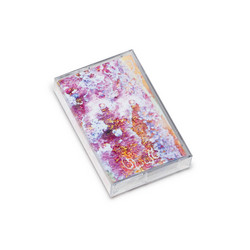Joda Foerster, Nick Kramer
Habitat II (LP)
Habitat (what we might now properly refer to as Habitat I) arrived, fully-formed, in 2021—the product of a conscientious, exploratory, and decidedly Covid-era collaboration between two Berlin-based experimental musicians: the composer N. (Niklas) Kramer, and percussionist, J. (Joda) Foerster. Inspired by the Italian architect, Ettore Sottsass, Habitat’s simple, albeit beguiling conceit (following in the footsteps of canonical ambient releases like Music for Airports and Plantasia) was that each track ought to represent a room in an imagined building. Taken quite literally, tracks like “Curved Hallway” guided the listener through a kind of psychogeographic labyrinth, at once welcoming and slightly uncanny.
Habitat II operates on a similar premise. But if Habitat I charted the perplexing intricacies of an imagined, self-contained structure, Habitat II expands the conceptual realm. Think now, not only of rooms in a hypothetical home, but of the winding hallways and grounds of a mid-century structure—perhaps slightly past its prime, but not at all an inappropriate venue for a late-night soiree. How might these features be imagined, mapped, and rendered enticing for a listener? We begin, appropriately, with “Seating (Welcome),” which, in its fluttering, aetherial suite of static, winds, and percussive depths, gently hypnotizes in the vein of Terry Riley, beckoning our entry. The clarity here, the directional flow of air, recalls the dignity and gestural simplicity of the Bauhaus school.
Of significant note is the Wasserspiel (track seven)—”water fixture” (loosely translated), like the sculpture by Lily Clark, which graces the record’s cover. In an album grounded by analogies, Wasserspiel constitutes an especially mimetic highlight: a cascading, shimmering, font of radiance that does not (to its strength) rely upon a sample or found-sound reference to running water. Instead we are left with the distinct impression of the glimmer of flowing liquid, and of the attendant, refractory evening sunlight. Indeed, fountains (the most common and domesticated form of Wasserspiele)—their simultaneous kitsch and abundance—may very well epitomize the kind of cultivated, sixties home-shopping catalog aesthetic that undergirds the Habitat series. These habitats, wherever they are, however they appear to you (and there is indeed ample room for interpretation)—we can all certainly agree that they are vaguely utopian and achingly nostalgic.
Of their compositional process, Kramer and Foerster reference their mutual interest in improvisation, and, furthermore, a kind of “first thought best thought” approach to recording and indexing ideas. Relying primarily on a sampler with a 15 second limit, their process emphasizes the organic layering of asynchronous (though, crucially, harmonious — perhaps even “hospitable”) loops. Suffice it to say, many rooms have been lost to the aether, casualties of a mercurial recording process. Those rooms that remain in Habitat II have been cultivated, furnished, and decorated. And they eagerly await your entry.

